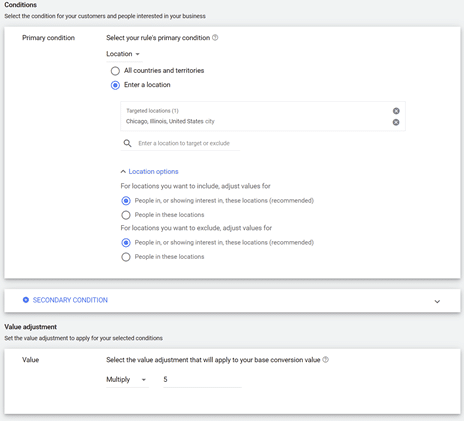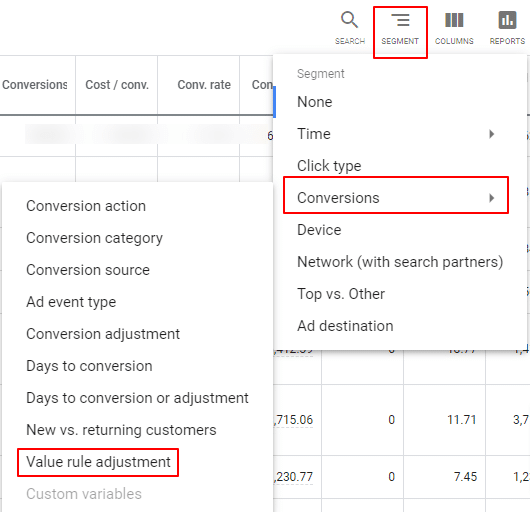As Google Ads advertisers, we’re ruled by data when we make decisions. And nothing is more important than conversion data in making our decisions. Google recently introduced conversion value rules to help achieve much more accurate results specific to business’ goals. Let’s take a dive into what this new tool actually is and how to implement it.
What are conversion value goals?
Not all conversions are created equal. As it stands now within Google Ads, we value a lead the same regardless of location, device, or audience. But not anymore! With conversion value goals, we can now add modifiers to those three attributes to add more or less value to them. Let’s look at an example to really put this into context:
Client: Kramer’s Home Improvement
Advertising Objective: generate leads to find his next client. Right now, all leads are valued the same at $200 per lead.
Mr. Kramer knows that while he might drive the majority of his leads from mobile, they rarely lead to closed leads, while desktop leads actually close twice as much. Knowing this information, we can now implement the conversion value rule to value mobile at 50%.
Now, when looking at Google Ads reporting, desktop will show $200 in revenue, while mobile will show $100. This is important to helping smart bidding strategies optimize towards your goal – we are now providing that additional element to help optimize towards more desktop leads.
But Jeremy, you ask, couldn’t we just bid down on mobile traffic? Yes and no. Using a traditional bidding strategy (yes, we do have that option), you will first want to really understand the data before making that decision; those leads can still be valuable and cost-effective. The only thing we are changing here is how we value desktop and the added revenue the leads bring in. If we are currently on a smart bidding strategy (like tROAS or tCPA), we do not have the ability to modify device bids, so leveraging conversion value rules will help with further learning on Google’s end, potentially giving your campaigns better results.
While that is one example, you can take this much further based on location or even audience (for example, if leads in Chicago outperform Indianapolis by 5x, you can then value Chicago much higher than Indianapolis).
Why would we want to implement this?
Very simple – we are providing Google’s smart bidding solutions with more valuable signals about what we truly value. Or in other words, we are giving Google more data to work with to help optimize towards your tCPA or tROAS goals.
How can I implement this today?
The process to implement conversion value rules is very easy to do.
1. Go to Tools & Settings in the upper right corner when logged into your Google Ads account.
2. Select ‘Conversions’ under the Measurement section.
3. Select ‘Value rules’ located on the left-side navigation.
4. Click the ‘Create Conversion Value Rule’ button.
5. From here, you will select the condition and value you want to adjust. Below is an example adjustment using the city of Chicago, which performed 5x that of Indianapolis:

6. You can also add a secondary condition; if you chose Location as your primary, you could choose Device or Audience as your secondary.
7. Click Save.
Once the new Conversion Value Rule has been running for a while, you can segment the data to see how it’s doing. To do so, on the Campaigns tab, click the Segment Icon, and select Conversions, then Value Rule Adjustments.

You’ll see three segments:
- Original value (rule applied): what you adjusted
- Original value (no rule applied): what you didn’t adjust
- Audience, Location, or Device adjustment: the additional amount adjusted
In our Chicago/Indy example, using a lead value of $100 with one lead from Chicago and one from Indianapolis, it would be:
- Original value (rule applied) = $100 lead value for one Chicago lead
- Original value (no rule applied) = $100 lead value for one Indianapolis lead
- Location adjustment = $400 additional increase for the Chicago lead
Our actual overall lead value would total $600, not $200.
Conversion value rules can be a powerful tool for many businesses, especially those that know their customers very well. Take the time to really understand your customers and the data you have already gathered to begin implementing conversion value rules today.




